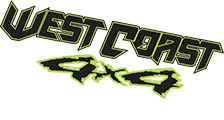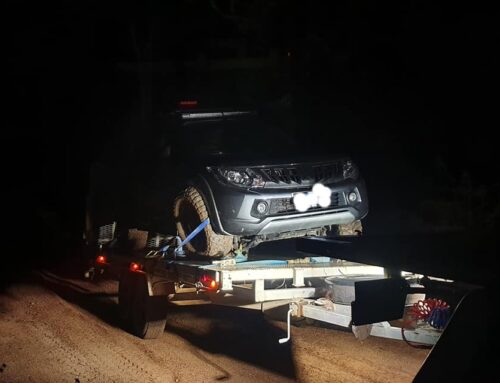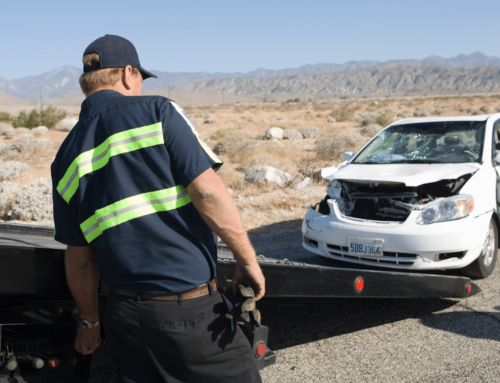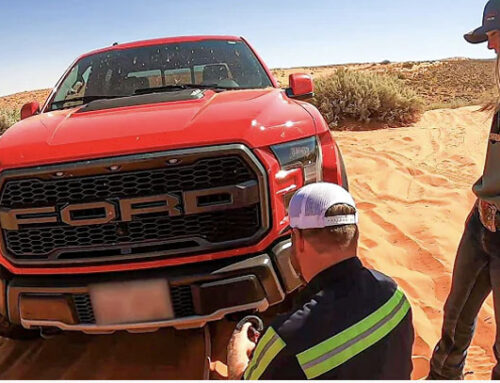Hitting the off-road tracks can be an adventure, but it comes with inherent risks, especially when you head into remote and rugged terrains where help isn’t close at hand. For 4×4 enthusiasts, getting stuck or lost can quickly turn a fun outing into a stressful situation.
The good news is that advancements in GPS and tracking technology have changed the way both towing companies and 4×4 owners approach recovery and rescue operations.
In this blog, we’ll explore how technologies are employed by towing services and what 4×4 owners can do to enhance their safety and recovery prospects.
The Role of GPS and Tracking Technology in Towing Services
Many towing companies have embraced advanced GPS and tracking systems to streamline their operations and provide faster, more efficient services. Here’s how they are using these technologies on a day-to-day basis:
Real-Time Vehicle Tracking: Towing companies utilise GPS trackers to monitor the location of their recovery vehicles in real-time. This allows dispatchers to quickly identify the nearest available tow truck to a stranded 4×4 driver, reducing wait times and enhancing the overall efficiency of the recovery operation. In areas where terrain and weather can make it challenging to reach a vehicle, having precise GPS data is important when planning the most effective route.
Geofencing and Alerts: Geofencing technology enables towing companies to set up virtual boundaries around specific areas, such as popular off-roading trails or remote regions. When a 4×4 vehicle crosses these boundaries, the system can automatically send alerts to both the vehicle owner and the towing company, indicating that assistance might be needed. This proactive approach helps in initiating recovery operations more swiftly.
Fleet Management Optimisation: GPS tracking systems are also used to manage the towing fleet more effectively. By monitoring vehicle status, fuel consumption, and route efficiency, companies can ensure that their recovery vehicles are always in optimal condition and ready to respond to emergencies. This also helps in reducing operational costs, which can be passed on as savings to customers.
Accurate Location Sharing: When a 4×4 driver is stuck in a remote location, providing accurate coordinates can be a challenge, especially if they are unfamiliar with the area. Towing companies often use GPS technology that allows drivers to share their exact location with recovery teams via a mobile app or satellite device. This precise location data minimises the time spent searching for the stranded vehicle, making the recovery process faster and more efficient.
Essential GPS and Tracking Tools for 4×4 Owners
While towing companies are equipped with advanced technology, 4×4 owners should also be embracing the advantage of GPS and tracking tools, enhancing their safety during off-road trips.
Here are some essential technologies and devices that every 4×4 enthusiast should consider:
Personal GPS Trackers: Personal GPS trackers are small, portable devices that can be attached to a vehicle or carried by the driver. These trackers send real-time location data to a predetermined contact or emergency service, allowing for quick and easy tracking in case of an emergency. Some models are equipped with SOS buttons that can send distress signals, along with location data, to rescue teams.
Satellite Communication Devices: In remote areas where mobile coverage is nonexistent, or close to, satellite communication devices, such as satellite phones or two-way satellite messengers, become invaluable. These devices allow 4×4 drivers to communicate their location and status to emergency services or friends and family, even when traditional communication methods fail. Some advanced models also include GPS tracking and navigation features, providing an all-in-one solution for off-road safety.
Off-Road GPS Navigation Systems: Whether you are new to 4 wheel driving, or you’ve been enjoying the off-road for a while, an off-road GPS navigation system can help you navigate challenging terrains. They offer detailed topographic maps, trail data, and real-time navigation that are crucial for 4×4 drivers exploring unfamiliar areas. These systems often include features like route planning, waypoints, and trackback options, which help drivers avoid getting lost and enable them to retrace their steps if necessary.
Emergency Locator Beacons (ELBs): ELBs are another essential tool for off-road enthusiasts – you really shouldn’t be going into more remote areas without one. These devices are designed to transmit a distress signal to search and rescue teams, along with precise location data, in the event of an emergency. ELBs operate on dedicated satellite networks, ensuring that the signal is received even in the most remote locations. For 4×4 drivers venturing away from towns and cities, an ELB can be a lifesaver.
Smartphone Apps with GPS Capabilities: There are numerous smartphone apps available that offer advanced GPS and tracking capabilities tailored for off-road use. These apps often include features like offline map access, real-time tracking, and location sharing. While they are not a replacement for dedicated GPS devices, they can serve as a valuable backup tool and are easy to use, making them accessible to all levels of 4×4 drivers. It is however important to ensure that mobile service is available in the area you are heading to.
Best Practices for Using GPS and Tracking Technology in 4×4 Recovery
While having the right technology is essential, knowing how to use it effectively is equally important. While many drivers have best intentions, they often don’t learn how to use their GPS systems effectively.
Here are some best practices for 4×4 owners to ensure they get the most out of their GPS and tracking devices:
Regularly Update Maps and Software: Ensure that your GPS devices and navigation apps are up-to-date with the latest maps and software. This will help you avoid outdated information, which can be especially problematic in areas where new trails or changes in terrain have occurred.
Test Equipment Before Departure: Before heading out on an off-road adventure, test all your GPS and tracking devices to ensure they are functioning properly. Check battery levels, signal strength, and any other essential features to avoid surprises when you’re deep in the wilderness.
Pre-Plan Your Route: Use GPS tools to pre-plan your route, marking important waypoints and potential hazards. You should always share this plan with someone who is not on the trip, so they have an idea of your intended path in case of an emergency.
Combine Multiple Technologies: Don’t rely on a single device or method for navigation and tracking. Combine multiple technologies, such as a dedicated GPS unit, a satellite system, and a smartphone app to increase your chances of being found quickly if you get stuck.
Educate Yourself on Device Features: Spend time learning about the features and capabilities of your GPS and tracking devices. Understanding how to use them effectively in various scenarios can make a significant difference in your safety and recovery experience.
Advanced GPS and tracking technology have become indispensable tools in 4×4 recovery, both for towing companies and off-road enthusiasts. By utilising these technologies, towing services can provide faster, more efficient recovery operations, while 4×4 owners can enhance their safety and ensure they can be found quickly in case of an emergency.
Whether you’re a seasoned off-roader or a beginner, investing in the right GPS and tracking tools is a smart move that can give you peace of mind and make your adventures more enjoyable. Another smart move is ensuring you have the details for Westcoast 4×4 Recovery saved in your phone. No one knows Perth and our state better than the team at Westcoast 4×4 Recovery, and when you get your 4wd stuck we are the ones to call.
Over the last 20 years we have never had a car we have not been able to recover. Whether you’re stuck in the sand, the vehicle is submerged in water or you’re deep in the outback, our recovery team has the experience to help.






Leave A Comment